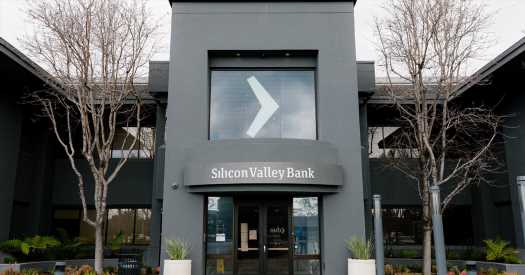As Wall Street braces for the Federal Reserve to — probably — raise interest rates on Wednesday, some analysts have said that the recent turmoil in the banking industry may have already generated similar effects to a rate increase, namely by slowing the economy.
The Fed began raising interest rates a year ago to combat a sharp increase in inflation. Higher interest rates make it more expensive for companies and households to borrow, constraining access to cash and restricting their ability to spend, reducing pressure on prices. On Wall Street, and in the corridors of the Fed, this is called tightening financial conditions.
The central bank has been clear that this could lead to economic pain. Although the Fed would never welcome a banking crisis, the turbulence could lead to a sharp pullback in bank lending, slowing the economy.
Torsten Slok, the chief economist at investment manager Apollo, estimated that the recent disruptions have produced tightening equivalent to the Fed raising interest rates 1.5 percentage points, twice the size of the biggest single increase by the Fed last year.
The Fed’s target interest rate is set to a range of 4.5 to 4.75 percent. Investors were recently betting that the Fed would raise rates to around 5.5 percent, but these expectations have since fallen to a peak of below 5 percent, not much higher than current rates.
“In other words, over the past week, monetary conditions have tightened to a degree where the risks of a sharper slowdown in the economy have increased,” Mr. Slok said.
Economists at Goldman Sachs said that because lending conditions had already begun to tighten “due to widespread recession fears,” the recent stress in the banking sector was equivalent to a quarter- or half-point increase in rates. The economists added that “the risks are tilted toward a larger effect,” and raised the likelihood of a recession in the next 12 months.
Goldman’s own financial conditions index, which is widely watched on Wall Street, has yet to show a significant tightening stemming from the banking crisis. That’s in part because the index tracks stock and bond prices as a measure of the money available in markets. Stock market indexes have broadly held up despite the declines of some bank stocks, while yields on government bond, which underpin borrowing costs throughout the economy, have fallen sharply, in part reflecting expectations that the recent turmoil would lead the Fed to lower interest rates in the near future. Bond prices move inversely to yields.
Other market measures have shown the effects of tighter financial conditions, with inflation expectations — a measure of where investors expect inflation to be in the future — falling sharply this month. And credit spreads, which measure the cost of borrowing for companies, have risen.
There is considerable uncertainty about how problems at banks reverberate throughout the broader economy.
Analysts at Deutsche Bank said that a “more modest tightening of bank lending” could shave half a percentage point from economic growth this year, while a “shock” that tightens lending more severely “could easily subtract more than one percentage point.”
When the Fed last released its economic projections, its policymakers penciled in a median forecast of 0.5 percent economist growth in 2023. Those projections will be updated on Wednesday, and if Deutsche’s analysts are correct, it implies that the United States is on the precipice of recession, even if there is modest tightening of financial conditions because of problems at banks.
“As a result, recent events strengthen our conviction that a recession remains the most likely outcome for the economy over the next year,” the analysts noted.
Source: Read Full Article
